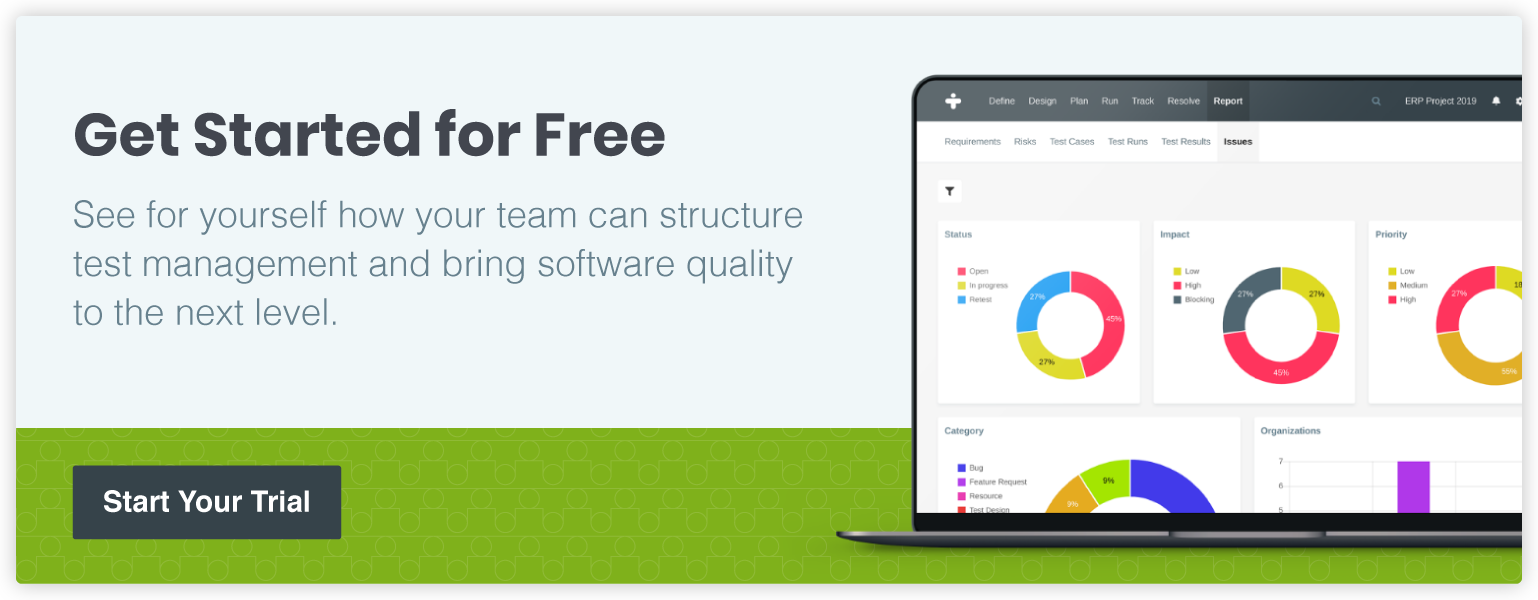7 Questions Developers Have About TestMonitor
Developers, regardless of industry, have many stressors in their professional lives. Chief among these is the need to meet client expectations without exceeding time and budget restraints. One area of particular importance is the testing phase, in which requirements are evaluated and vital feedback is captured and prioritized.
Fortunately, developers now have a wealth of new tools and capabilities available to improve their performance and spend more time on the tasks that matter. In fact, there are even test management tools—such as TestMonitor—designed with them in mind.
So whether you are researching test management tools for the first time or are looking to upgrade to something better, we know the platform you select will be a key part of your workflow.
If you are like the rest of the skeptical developers out there, you likely still have some questions about TestMonitor. That’s why we rounded up the seven most common ones here:
1. How does TestMonitor facilitate collaboration throughout the testing phase?
From definition to resolution, each stage of software testing is made simple using TestMonitor’s built-in communication tools, issue management, and simplified feedback capture.
Testers and other stakeholders can even upload screenshots, provide detailed feedback, and summarize their results with a smiley-based rating system so developers can keep an eye on how their work is being received.
2. How does TestMonitor handle secure authentication?
TestMonitor was built with single sign-on support for both Google Workspaces and Microsoft Azure. TestMonitor can also facilitate two-factor authentication for organizations that want an extra layer of security for sensitive code, data, and features during the early stages of development.
3. How easy is it to configure TestMonitor?
We understand the need for simple and structured testing to remove extra administrative tasks and give developers more time to spend on the real work.
That’s why we designed TestMonitor with unique log-ins for every user that display their tasks, test cases, and reports. For developers, TestMonitor can store and restore test case templates in a library and logically display linkages between risks, requirements, and outcomes.
4. What reporting does TestMonitor offer?
We understand the pressure on developers to keep stakeholders informed of the stages and status of their work.
To help, TestMonitor delivers both out-of-the-box and customizable reports to help development teams share their status, summarize results, and send updates to stakeholders.
Developers and project stakeholders can also use our data-rich, customizable dashboards to provide real-time updates on tasks and their statuses, cutting down on emails and meetings.
5. How can TestMonitor improve my testing workflow?
Sometimes, you need to step back and see how different elements are fitting together. Other times, you need to deep dive into a problem and develop a unique test case. TestMonitor allows for both perspectives.
Developers can filter by requirement, milestone, or stage to review and prioritize resources.
6. Does TestMonitor provide integrations, including with other test automation tools?
We know the power of having a consolidated view of your responsibilities. That’s why TestMonitor provides a representational state transfer (REST) application programming interface (API), along with extensive documentation on how to configure it to meet your needs. Nearly every object is accessible through this API, including test cases, runs, results, and issues.
Regarding test automation tools: Using our API, you can create test runs for each automation cycle and store every test result after a run has completed. Then, use our powerful reports functionality to discover trends that can improve the quality of your software.
7. What support and resources does TestMonitor provide?
This is another strength of TestMonitor—we have extensive Knowledge Base articles, regular webinars, a blog on the latest industry topics, and a support team ready to assist when needed.
Take your work to the next level with TestMonitor.
We know that developers can be particular about the tools they use and protective of their workflows. But we also know that once you get a chance to see the power, flexibility, and built-in features that TestMonitor provides, you will be just as excited as we are.
Ready to try TestMonitor for yourself? Contact us now to set up a 14-day free trial!






